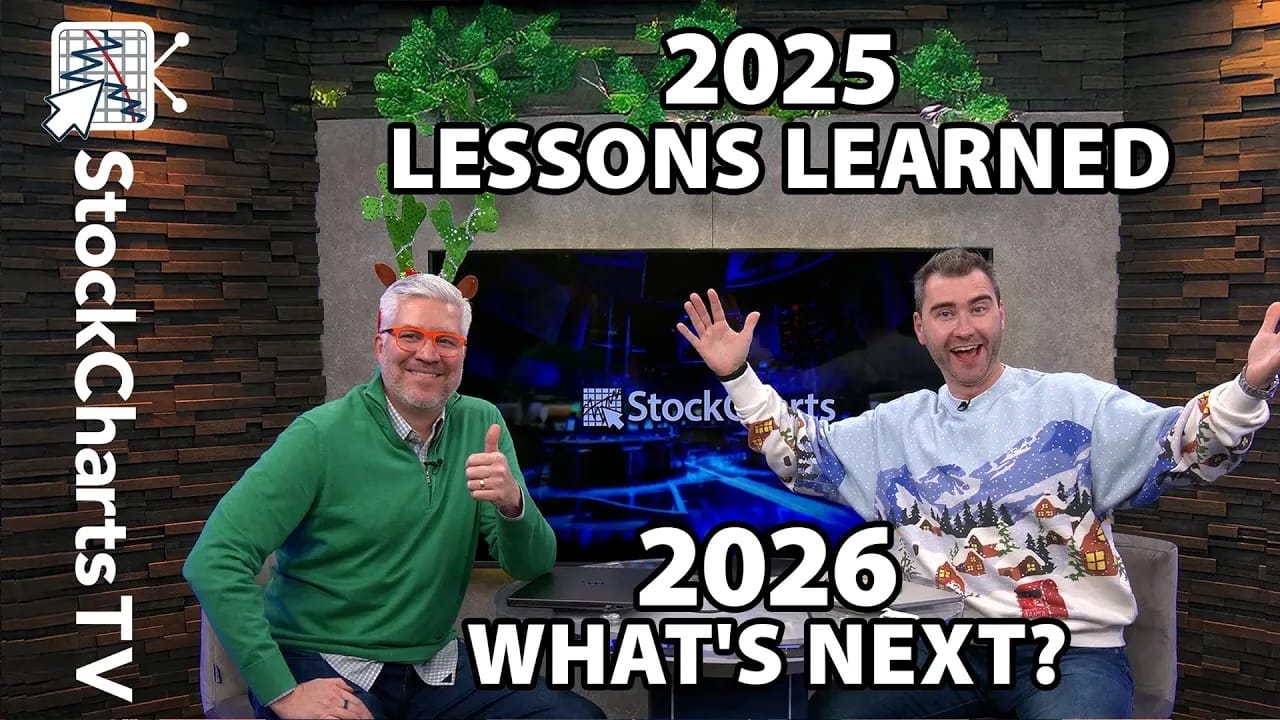STAPLES AND CYCLICALS HIT NEW HIGHS TOGETHER -- BUT CYCLICALS STILL HAVE THE EDGE -- HEALTHCARE SPDR HITS NEW RECORD HIGH -- MIDCAPS MAY GIVE TRUER PICTURE OF STOCK MARKET --S&P 400 MID CAP INDEX IS CONSOLIDATING IN BULLISH TRIANGLE
STAPLES AND CYLICALS BOTH HIT NEW HIGHS... We can often get clues about stock market direction by watching shifting rotations among market sectors. In a strong market, stocks tied to the economy usually lead. In a correction, defensive stocks lead. But what are we to make of a situation where both sectors are hitting record highs at the same time, as they are now? The daily bars in Chart 1 show the Consumer Discretionary SPDR (XLY) hitting a record high this week. Its rising relative strength line (top of chart) has outperformed the S&P 500 by 2% over the last year. That's a positive sign for the stock market. Chart 2, however, shows the Consumer Staples SPDR (XLP) also hitting a record high this past week. Its relative strength line, however, shows it underperforming the SPX by -5% over the last year. And that's where the bigger story lies. When in doubt, it's usually best to check out competing sectors' relative performance. A large part of their diverging performance took place after the November election when cyclicals soared and staples sank. Let's take a closer look at their more recent performance.

(click to view a live version of this chart)
Chart 1

(click to view a live version of this chart)
Chart 2
CYCLICALS/STAPLES RATIO STILL IN UPTREND... The simplest way to measure relative performance between two sectors is to compare them directly. And that's best done with a relative strength ratio. The daily bars in Chart 3 plot a "ratio" of the Consumer Discretionary SPDR (XLY) divided by the Consumer Staples SPDR (XLP). After surging during November, the ratio peaked in early December and has been trading sideways since then. Although both did slightly better than the SPX over those six months, staples did slightly better than cyclicals. Cyclicals have done slightly better since March. Applying basic chart analysis to the ratio suggests a sideways trading range within the context of a longer-range uptrend. In other words, this looks more like a pause in the uptrend rather than a reversal. And that carries good news for the stock market.

(click to view a live version of this chart)
Chart 3
HEALTHCARE SPDR HITS NEW RECORD... Here's more good news for the stock market. Healthcare stocks are breaking out. Chart 4 shows the Health Care SPDR (XLV) hitting a new record high today. That's important for two reasons. First, it adds another sector to the list hitting new highs. The second reason is more important. Healthcare is the second largest sector in the S&P 500 (14%). That makes it second to technology's 20% weighting. Its relative strength line (top of chart) shows healthcare underperforming over the past two years. The RS line is rising this year, however, with the XLV outperforming the SPX by 4%. That makes it a 2017 leader. I wrote earlier this year that healthcare was one of the cheapest parts of the market. It still is. [Healthcare is one of the bigger parts of the value stock universe. Its recent strength is helping to lift that part of the market which has been lagging behind technology-dominated growth stocks. That's helping to broaden out the market uptrend].

(click to view a live version of this chart)
Chart 4
MIDCAPS MAY SHOW TRUER PICTURE OF US STOCKS ... Several of my recent messages have focused on the divergence between large and small cap stocks. Yesterday's message suggested that part of that divergence was due to stronger foreign markets. Large cap multinationals do better when foreign markets are strong, which is the case at the moment. Small stocks are more closely tied to the U.S. economy. So which one is giving us the right story? Midcap stocks may be giving us the truest story of the state of the U.S. market. That's because they're right in between the two other extremes. So far this year, midcaps have gained 4% which is half as much as the S&P 500 gain of 8%. But it's still twice as much as the 2% gain in the Russell 2000 Small Cap Index (and 4% better than the S&P 600 Small Cap Index). And the midcap chart looks positive. Chart 5 shows the S&P 400 Mid Cap Index (MID) in a sideways consolidation pattern since its early March peak. In addition, the two converging trendlines look like a bullish "symmetrical triangle" formation. That increases the technical odds for an eventual upside breakout. That would broaden out the market uptrend which has been led mainly by large cap stocks. [Small caps are leading today's market bounce with the Russell 2000 regaining its 50-day average. That's encouraging if it continues].











